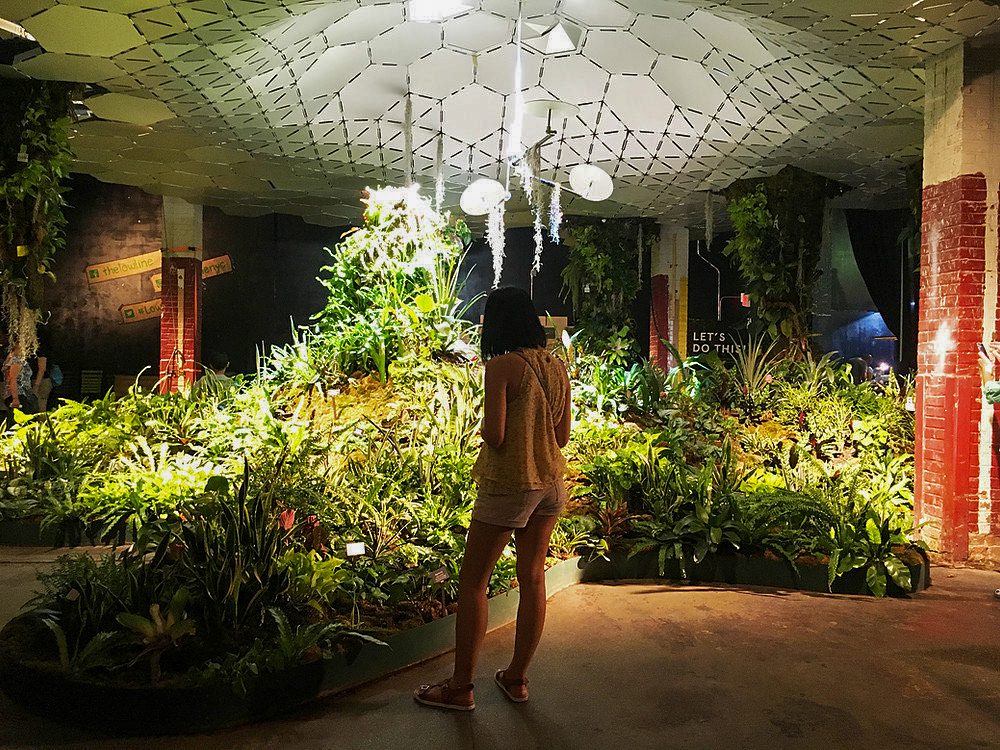James Ramsey speaks on architecture, innovation and the anthropocene
James Ramsey showcases his recent project, the New York City Lowline. Inspired by the “post-apocalyptic landscape architecture,” the Q&A section of the talk lended itself to a conversation on how humans affect the environment through architecture and how such effects can be remedied.

Courtesy of James Ramsey
Architecture serves as the timestamp of an era and the largest of ecological footprints.
Architect James Ramsey ’99 spoke at a talk for the Franke Program in Science and the Humanities on Nov. 10, 2022 at the Humanities Quadrangle. The talk showcased recent innovation in architecture through Ramsey’s work on the New York City Lowline and prompted conversation on the anthropocene and the current climate crisis.
“Someday everything we ever build will be gone,” Ramsey told the News. “Can we use architecture and design to sort of communicate impermanence? Or for that matter, communicate to someone viewing these pieces of art or installation the sense that things are transitory; [that we are] miniscule … in the face of deep geological time.”
Having studied both physics and architecture as a Yale undergraduate before ultimately deciding to major in the latter, James Ramsey has an eye for problem-solving and innovation. From commissioned modernist homes and art museums to the New York City Lowline and an upcoming elephant sanctuary in Kenya, Ramsey’s work covers a wide range.
During his time at Yale, Ramsey said he was particularly inspired by the design of the Beinecke Library. He pointed out another “cool architectural moment on campus,” a passageway on the side of Davenport College.
“You have this really subtle architectural transition from Gothic to … Georgian style,” Ramsey said. “And little by little as you walk through it, it’s almost like walking through a time machine.”
Ramsey says he was influenced by Shigeru Miyamoto — one of the game designers of Super Mario Bros. — as well as two of the professors he had during his time at Yale: Stanley Insler and Harvey Weiss.
“[Insler and Weiss] were able to take their experiences of hyperspecialization, but also … their broad knowledge about a great many fields and use those to draw disciplines and realizations together in a way that we’re able to … create these broadly applicable general comments about the world around us and … humanity,” Ramsey said.
The coexistence of hyperspecialization and broad applicability can be seen throughout Ramsey’s projects. While the fundamental techniques of architecture are very precise, they’re fluid in the sense that they transfer to a variety of problems.
The Lowline — an underground park being built in the Lower East Side of New York City — utilizes the design of a Cassegrain telescope to relocate solar energy by transporting it underground. This technology can then be used to grow subterranean vegetation.

“I thought the incorporation of different timescales; human, geolical, cosmological was really interesting,” Anna Lenaker, ENV ’24 told the News. “And I really enjoy thinking about nature as something that consumes human structures.”
During the question and answer portion of the talk, many questions pertained to the potential for the Lowline technology to make advancements in counteracting climate change.
Charnice Hoegnifioh ’24 had thoughts on how such technology could also contribute to concerns regarding food security.
“Seeing how a major part of … his experimentation was testing out … different species of plants, it made me wonder if … there could be other applications of redirecting [concentrated] sunlight from outside to create underground or subterranean … farms and agricultural centers that can be used to really bolster the world’s food supply,” Hoegnifioh said.
Ramsey’s experience and expertise in seemingly disparate disciplines — physics and architecture — epitomizes the mission of the Franke Program in Science and the Humanities as stated on their website: “To foster communication, mutual understanding, collaborative research and teaching among diverse scientific and humanistic disciplines.”
“It’s important to hold on to and maintain all of your kooky, disparate interests and curiosities that you have and not think of them in a totally pragmatic way,” Ramsey says, “The more you can grow your base of knowledge and your understanding of disparate fields, the broader the palette is that you can then bring into solve problems … in any field — design or otherwise.”
The Humanities Quadrangle is located at 320 York Street.







